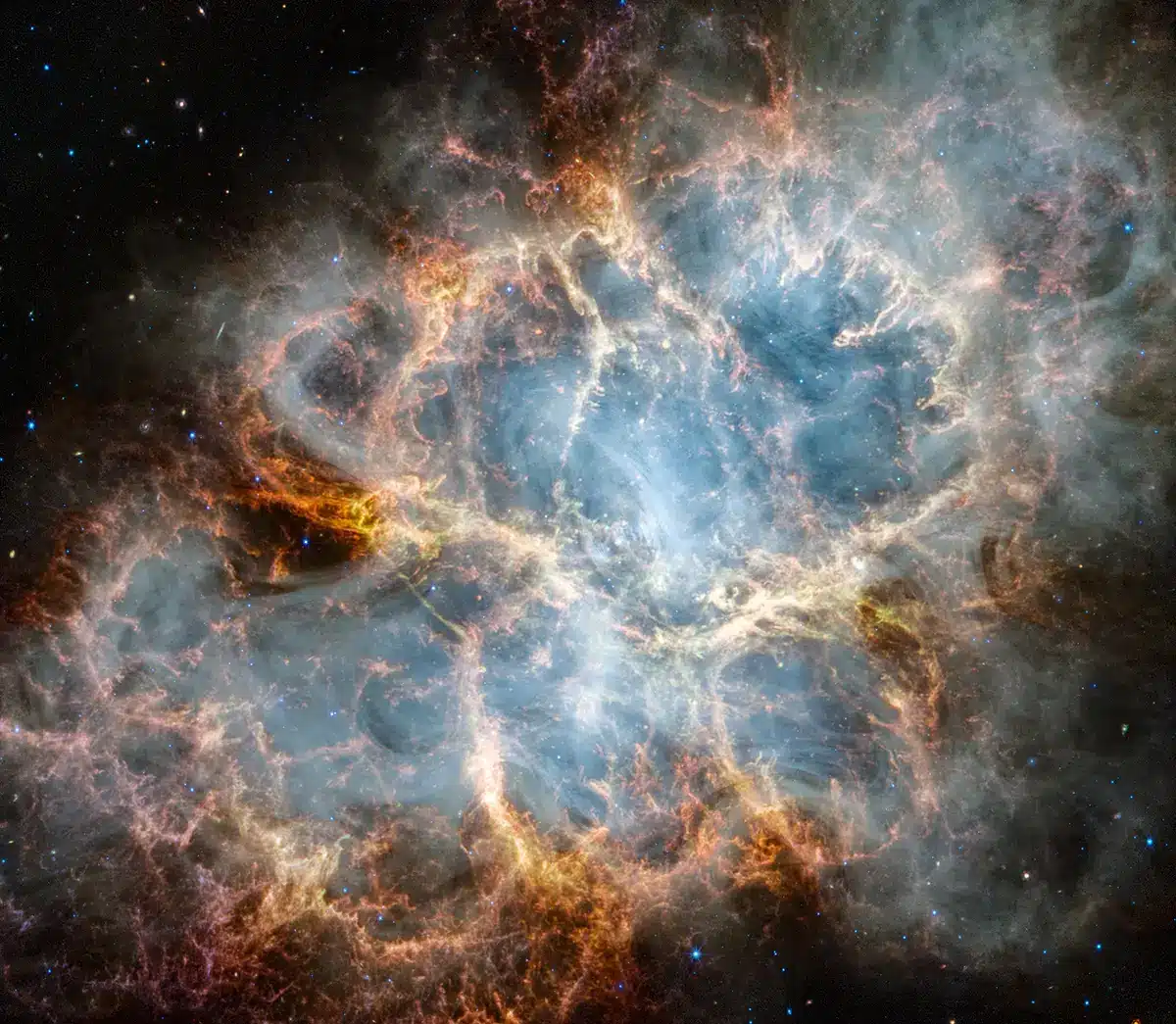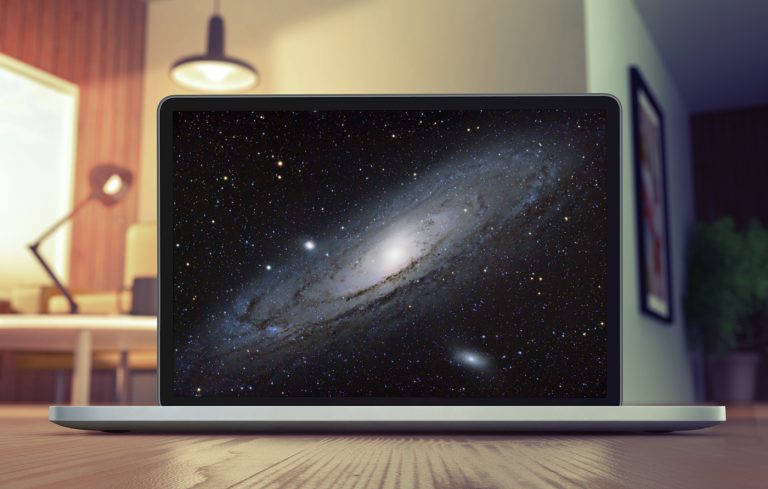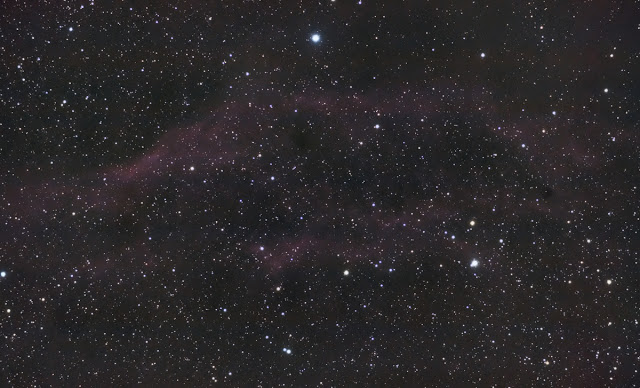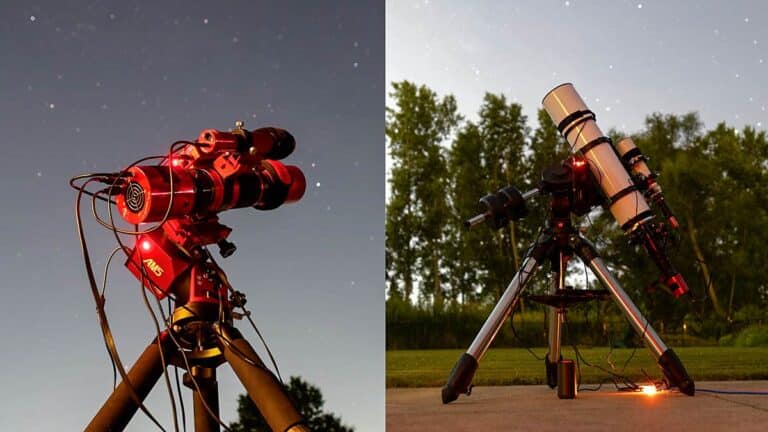JWST Crab Nebula vs. Amateur Telescope
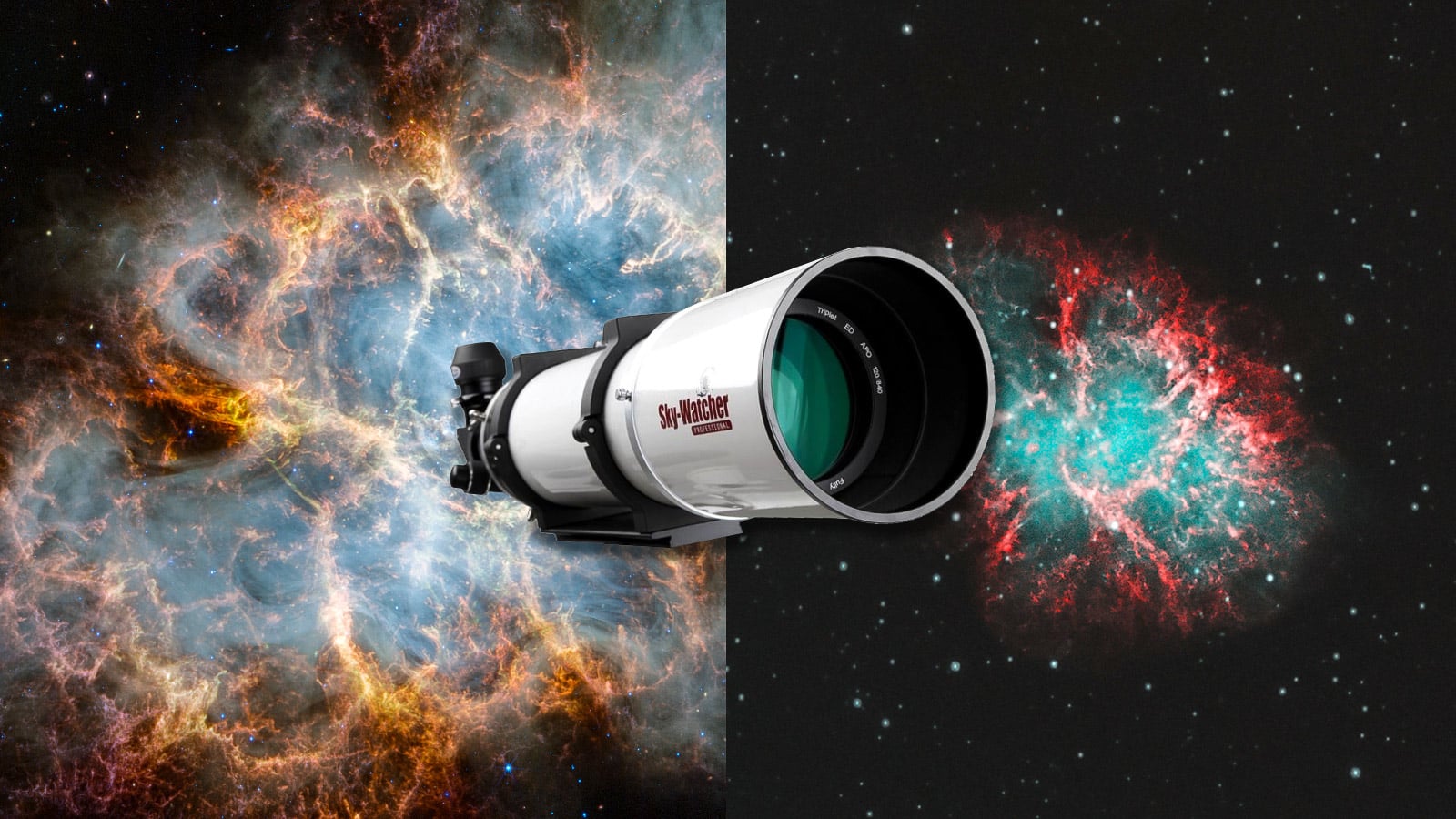
The James Webb Space Telescope (JWST) has just released a new image of the Crab Nebula using its NIRCam (Near-Infrared Camera) and MIRI (Mid-Infrared Instrument). This supernova remnant lies about 6,500 light-years from Earth in the constellation Taurus.
The Crab Nebula has fascinated astronomers for many years since a ‘guest star’ was first documented by Chinese astronomers in 1054 AD. It is a relatively nearby example of an ever-expanding supernova. While it may look similar to the Hubble version of the image captured in 2005, the JWST has revealed emission from dust grains in the central regions of the supernova for the first time.
The Crab Nebula is comprised of many elements, and it is represented in the following James Webb Space Telescope image by assigning colors to the different filters from JWST’s NIRCam and MIRI. The JWST team decided to photograph the Crab Nebula for many scientific reasons, including studying the synchrotron radiation produced by the nebula’s pulsar (a rapidly rotating neutron star).
The Crab Nebula by the James Webb Space Telescope. NASA, ESA, CSA, STScI, T. Temim (Princeton University).
The Crab Nebula (Messier 1, or M1) is one of the most well-studied supernova remnants in the night sky. However, scientists still have questions about the explosion that created it. “Webb’s infrared sensitivity and spatial resolution are offering astronomers a more comprehensive understanding of the still-expanding scene.”
JWST Crab Nebula vs. Amateur Telescope
For fun, I thought it would be interesting to see the differences between the JWST and the image of the Crab Nebula I took using my backyard telescope. Of course, my image was not captured using a near-infrared camera, just an ordinary dedicated astronomy camera with narrowband filters.
While I like to think of myself as a decent astrophotographer, my ground-based image of Messier 1 doesn’t hold a candle to the latest version taken by the JWST. The image below was captured at a focal length of 1050mm, using a monochrome camera and narrowband filters. This is a good example of what backyard astrophotographers can hope to expect with a camera and telescope in visible light.
The Crab Nebula by Trevor Jones with an Amateur Telescope. (Sky-Watcher Esprit 150).
The biggest difference between my image of the Crab Nebula and the one captured by the JWST is that mine was not captured in infrared light. Infrared light can penetrate dust and gas that block visible light, allowing astronomers to see details that are otherwise hidden.
The image includes 11 x 5-minute exposures in Hydrogen-Alpha and 10 x 6-minute exposures in OIII. Astronomik 6nm narrowband filters were used to ignore light pollution and capture specific wavelengths of light emitted by this nebula. To create an image like this, I use stacking software to combine all of the image data into a master file, which is then ‘stretched’ to reveal intricate details.
To see the latest images of the Crab Nebula taken by the James Webb Space Telescope in high resolution, be sure to visit the official release webpage to view the incredible image in all its glory (including a massive 96-megapixel version that you can print out). Also, be sure to visit the image gallery to see the latest JWST pictures as they are released.
